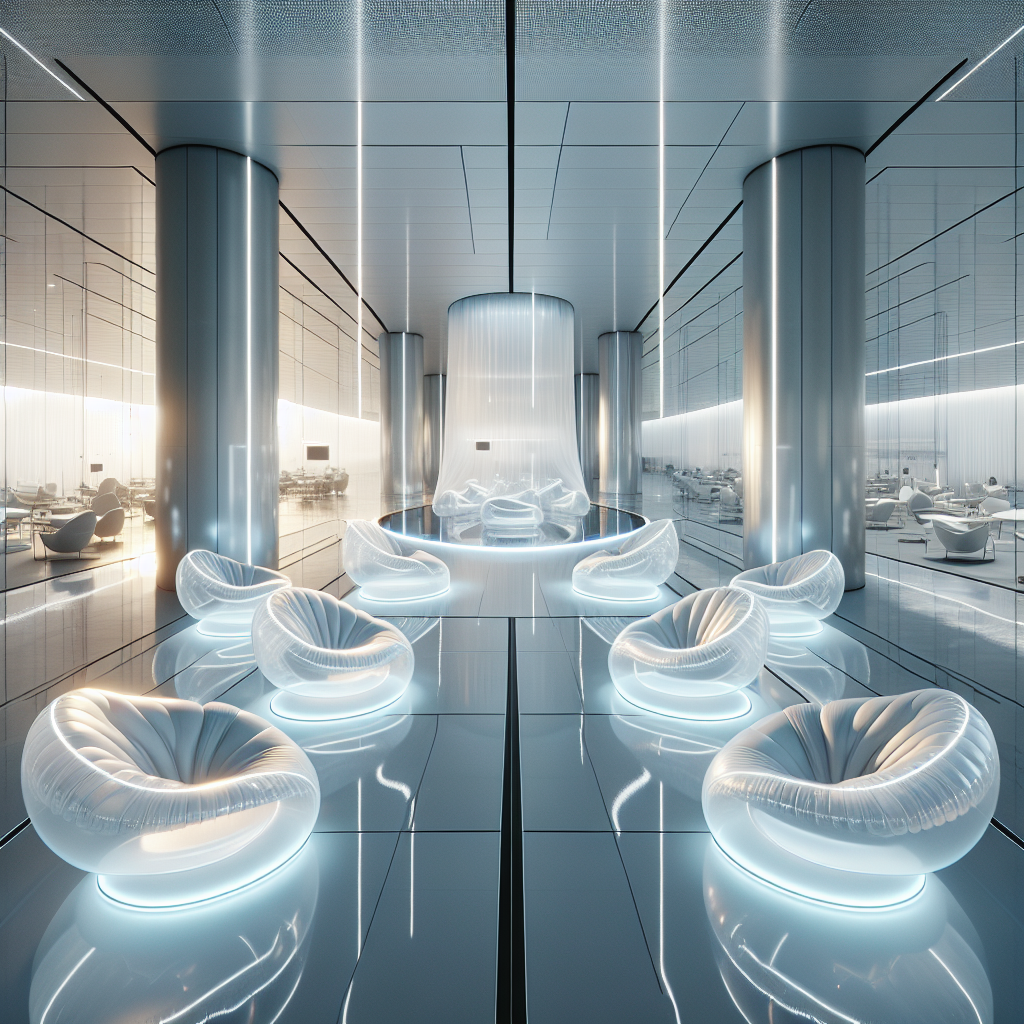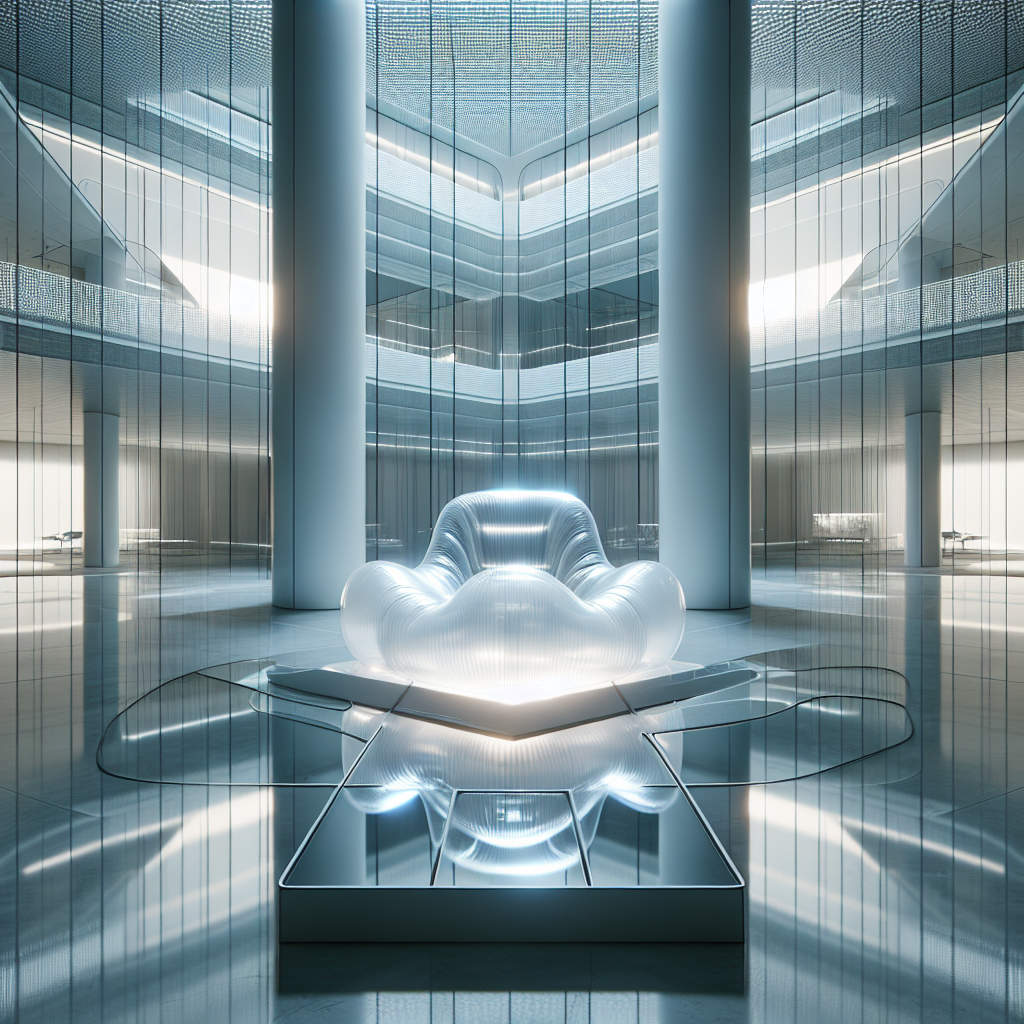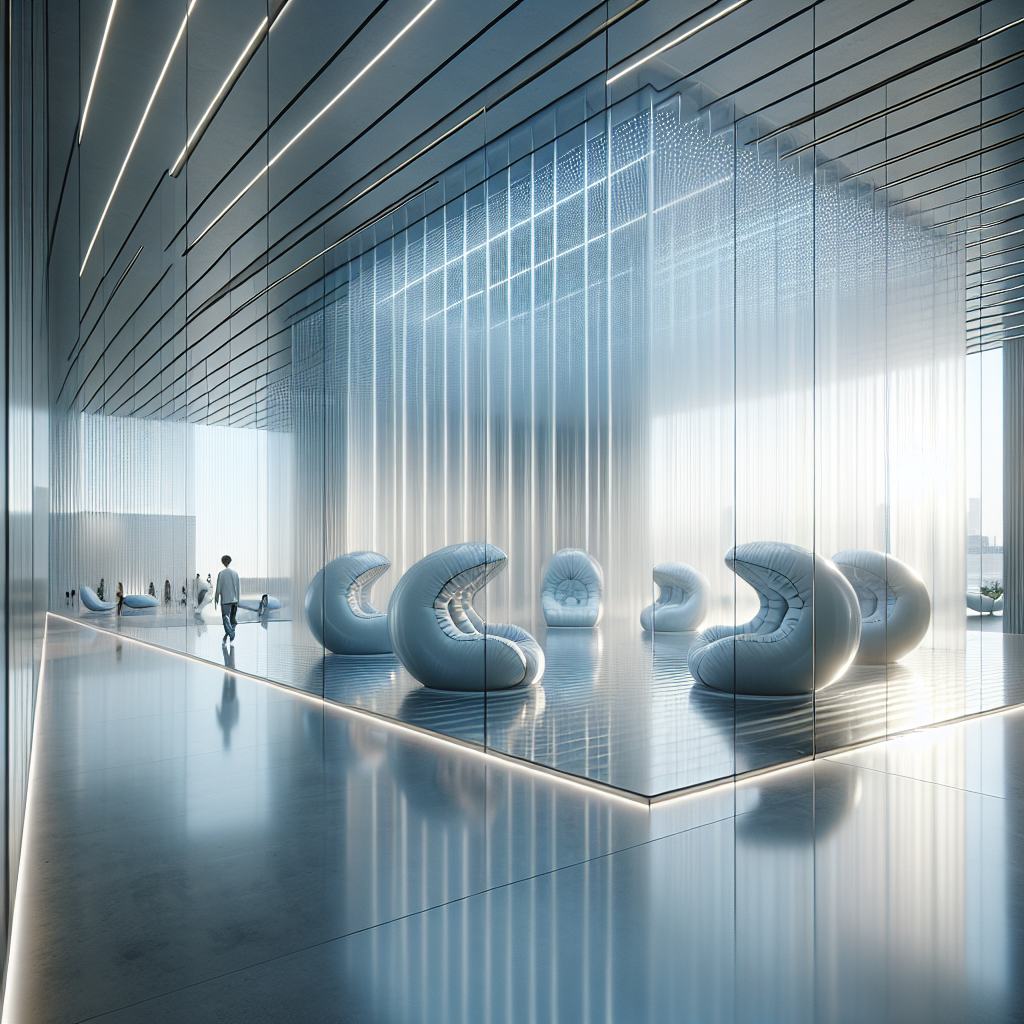Interactive ephemeral seating: inflatable chairs triggered by sensors

Interactive Ephemeral Seating: Inflatable Chairs Triggered by Sensors
In the evolving dialogue between design, technology, and human experience, a new typology of furniture is emerging—interactive ephemeral seating. These are not static chairs or fixed installations, but living, breathing objects that respond to presence, movement, and emotion. Imagine entering a gallery, a lobby, or a festival pavilion where seating materializes only when you approach—inflatable chairs triggered by sensors that appear, support, and then quietly vanish. This poetic interplay between the tangible and the transient is redefining how designers conceive of space, interaction, and sustainability.
The Rise of Ephemeral Design
Ephemeral design—rooted in the idea of impermanence—has long been a theme in architecture and art installations. From temporary architecture to pop-up pavilions, designers have explored how built environments can adapt to time, context, and user behavior. Yet, the recent integration of sensor technology and inflatable materials has introduced a new layer of responsiveness. These designs are not merely temporary; they are alive in their temporality.
Inflatable seating systems, once relegated to playful outdoor furniture or emergency shelters, are now being reimagined as intelligent, interactive components of spatial design. Through embedded motion sensors, pressure detectors, and AI-driven microcontrollers, these chairs inflate upon detecting human proximity and deflate when no longer needed. The result is a choreography of appearance and disappearance—a sustainable and performative approach to seating that minimizes material use while maximizing experiential impact.
Technology Meets Tactility
At the heart of this innovation lies the seamless integration of responsive design and material science. Designers are experimenting with ultra-lightweight thermoplastic polyurethane (TPU) membranes and biodegradable polymers that can withstand repeated inflation cycles without compromising comfort or form. The tactile experience is central: the gentle expansion of the chair as it inflates beneath you, the soft hiss of air, the subtle give of the surface—all evoke a sensory intimacy that static furniture rarely achieves.
According to a 2024 report by the World Design Organization, the global market for smart and adaptive furniture is projected to grow by 12% annually through 2027, driven by advances in embedded sensors and the increasing demand for flexible environments. This aligns with the broader movement toward responsive architecture, where buildings and interiors dynamically adjust to human presence, light, and temperature.
Case Studies: From Installation to Everyday Use
One of the most striking examples of interactive ephemeral seating debuted at Milan Design Week 2024, where a collective of young designers presented “Airborne Conversations”—a cluster of translucent inflatable pods that inflated when two or more people approached. The installation encouraged spontaneous social interaction, transforming the act of sitting into a shared performance. Each pod was embedded with proximity sensors and controlled by a central algorithm that adjusted inflation pressure based on the number of occupants, ensuring ergonomic comfort while maintaining visual lightness.
Similarly, at the 2023 Interactive Installations exhibition in Tokyo, designer Naoko Ishida unveiled “Breath Seats,” a series of air-filled cushions that pulsed gently in rhythm with ambient sound. The installation blurred the boundary between furniture and living organism, creating a meditative environment where visitors could literally feel the space breathe around them.
These projects underscore a shift from object-based design to experience-based design. The chair is no longer a fixed entity but a responsive interface—an ephemeral architecture of comfort that appears only when needed.
Sustainability Through Temporality
Beyond their technological allure, inflatable sensor-triggered chairs embody a profound ecological statement. By existing only when occupied, they drastically reduce the spatial and material footprint of traditional seating. This aligns with the growing ethos of circular design and resource efficiency in contemporary architecture. Air, after all, is the ultimate renewable material.
Moreover, many designers are exploring biodegradable or recyclable membranes, enabling these chairs to be fully disassembled and reintegrated into production cycles. The ephemeral nature of the design—its impermanence—becomes a metaphor for sustainability: a reminder that comfort and luxury need not be permanent to be meaningful.
As cities grapple with density and the need for adaptable public spaces, such responsive seating could transform how we occupy plazas, transit hubs, and cultural venues. Imagine an urban square where seating blooms at dusk as people gather, then disappears at dawn, leaving the space open for other uses. This kind of adaptive urban furniture resonates with the same spirit that drives experimental fabrication and temporary architecture—designs that flex with the rhythms of human life.
Human Interaction and Emotional Design
What makes interactive ephemeral seating particularly compelling is its emotional intelligence. The responsiveness of these objects fosters a sense of dialogue between user and environment. In an era where digital interfaces dominate, these tactile, air-based systems reintroduce physical empathy into design. The inflation of a chair in response to one’s presence feels almost like a gesture of welcome—a spatial handshake.
Design theorists have drawn parallels between such responsive environments and the principles of biomimicry, where design imitates natural systems. Just as flowers open in response to sunlight or touch, these inflatable chairs respond to human energy. This biomimetic approach not only enhances user experience but also redefines our relationship with built environments, making them more attuned, more alive.
Challenges and Future Directions
Despite their promise, interactive inflatable seating systems face several challenges. Durability remains a concern, especially in high-traffic public spaces. Designers must balance the delicacy of the experience with the robustness required for real-world use. Power supply and maintenance of embedded sensors also demand thoughtful integration, ideally through wireless charging or kinetic energy harvesting.
There is also the question of aesthetics. How can designers ensure that these transient forms complement architectural contexts rather than appearing as novelties? The most successful examples integrate subtlety—using translucent materials, muted tones, and sculptural silhouettes that harmonize with their surroundings. When done well, the result is an ethereal presence that feels both futuristic and poetic.
Looking ahead, the convergence of AI-driven behavioral mapping and environmental sensing could enable even more sophisticated interactions. Future iterations might adjust inflation pressure based on biometric feedback—heart rate, body temperature, or stress levels—creating personalized comfort zones that respond to the user’s emotional state. This evolution mirrors the broader trajectory of AI in architecture, where data-driven insights inform spatial design at both micro and macro scales.
Ephemeral Comfort in a Permanent World
In a culture obsessed with permanence and possession, the notion of seating that vanishes when not in use feels almost radical. Yet, this transience is precisely what makes interactive ephemeral seating so relevant. It challenges our assumptions about comfort, ownership, and materiality. It invites us to experience space as a living system—one that breathes, responds, and evolves.
Ultimately, inflatable chairs triggered by sensors are more than technological curiosities; they are philosophical provocations. They ask: what if design could be as fleeting as a breath, yet as meaningful as a touch? In their quiet inflation and deflation, these chairs remind us that architecture, at its most human, is not about what endures—but about what connects.
Keywords: interactive ephemeral seating, inflatable chairs, sensor-triggered furniture, responsive design, adaptive furniture, sustainable design, smart interiors, temporary architecture








